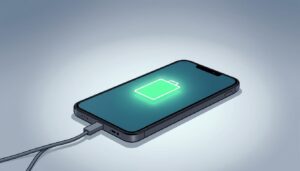Your smartphone holds powerful tools most users never see. Special number sequences unlock hidden menus and diagnostic features built into your device. These shortcuts let you check hardware performance, review network details, or adjust system settings without third-party apps.
Two main protocols make these tools work. The first connects directly to carrier systems for service updates or plan checks. The second interacts with your phone’s internal software for tasks like battery analysis or sensor tests. Both methods use structured number patterns that trigger specific actions when dialed.
Technicians rely on these sequences for rapid troubleshooting, but everyday users benefit too. You can verify call-forwarding settings, display software versions, or test touchscreen responsiveness in seconds. Always confirm a code’s purpose before using it – some functions might reset preferences or affect service.
These shortcuts work across most Android devices and carriers when properly formatted. They eliminate menu diving by providing immediate access to advanced options. Learning a few key combinations helps you maintain peak device performance and resolve issues faster.
Diving Into Hidden Phone Features with USSD Codes
Behind your phone’s standard menus lies a network of advanced tools accessed through numeric patterns. These sequences act as direct gateways to system-level controls, letting users bypass standard settings and interact with core functions.
Exploring the Role of Secret Codes in Modern Phones
Modern devices use two primary protocols to handle hidden functions. The first connects to carrier networks for real-time account updates. The second operates within the phone itself, running hardware checks or displaying technical details.
Carrier-focused sequences work without internet access. They retrieve plan balances or enable special services instantly. Device-oriented patterns reveal battery health, signal strength, and component performance metrics.
How USSD and MMI Protocols Enhance Device Control
Manufacturers implement these protocols differently across brands. Universal sequences function on most Android phones, while others require specific models. Apple devices restrict many functions due to stricter security measures.
Technical users rely on these shortcuts for instant diagnostics. Service teams use them to verify network configurations or identify hardware issues. Always research a sequence’s purpose before activation to avoid unintended changes.
Essential USSD Code Tricks for Phone Diagnostics
Your device’s dialer holds more power than you might realize. Structured number combinations unlock critical service features and hardware details instantly. These tools help manage communication settings and access technical specifications without app installations.
Activate Call Waiting and Other Service Functions
Manage incoming communications better with simple dial patterns. Enter *43# to enable call waiting alerts during active conversations. This lets you switch between calls or merge them without dropping either party.
Control how others see your contact details using *31#. This sequence toggles caller ID visibility across networks. Always confirm changes with your carrier, as some features depend on subscription plans.
Retrieve Critical Device Information
Identify your smartphone quickly using *#06#. This universal combination displays your 15-digit IMEI number instantly – essential for insurance claims or theft reports. Keep this identifier secure to prevent misuse.
Check radio frequency exposure levels with #07#. The displayed SAR values help assess safety compliance during prolonged use. For network troubleshooting, *#*#232338#*#* reveals your Wi-Fi adapter’s unique MAC address.
Advanced users can access comprehensive system data through *#*#4636#*#*. This menu shows battery health metrics, cellular signal strength, and data consumption patterns. Use these insights to optimize performance and troubleshoot connectivity issues.
Tips & Best Practices for Utilizing Hidden Diagnostic Tools
Mastering hidden device features requires strategic approaches. Service providers and manufacturers implement these tools differently, demanding tailored methods for safe exploration. Follow these guidelines to balance functionality with security.
Understanding Carrier-Specific and Manufacturer Variations
Carrier implementations vary significantly. One provider’s balance-check shortcut might display network diagnostics for another. Always confirm patterns with your service company before use.
Device brands also modify access levels. Some Android models reveal extensive hardware details, while others restrict sensitive menus. Universal combinations work best for basic call features like forwarding or caller ID management.
Navigating Android Settings and Secret Menus Safely
Execute numeric patterns cautiously. Many activate immediately upon entering the final character, while others need manual confirmation. Bookmark verified sequences for repeat use.
Create system restore points before testing new combinations. This protects against accidental setting changes affecting device performance or service connectivity.
Maximizing Functionality Without Compromising Security
Prioritize provider-approved shortcuts for account management. Use manufacturer-specific patterns only from official documentation. Never share sensitive outputs like IMEI numbers publicly.
Disable automatic updates during diagnostics to prevent conflicts. For advanced users, maintain encrypted logs of successful sequences and their outcomes. This practice enhances troubleshooting efficiency while maintaining security protocols.
Wrapping Up Hidden Code Insights and USSD Code Tricks
Modern smartphones contain layered systems that balance user-friendly interfaces with professional-grade controls. Special number combinations bridge this gap, offering direct access to diagnostic features without app downloads. These tools reveal everything from network configurations to hardware performance metrics.
Carrier protocols and manufacturer-specific functions work differently across devices. What retrieves call logs on one phone might display signal strength data on another. Always verify combinations through official sources before testing them.
While these shortcuts solve many common issues, complex problems require expert attention. Persistent connectivity troubles or unexplained battery drain often need professional diagnostics. Certified technicians use advanced tools beyond basic number patterns.
Used wisely, these hidden features empower users to maintain peak device performance while respecting security boundaries. They demonstrate how smartphone technology balances accessibility with protected systems – putting essential controls in your hands without compromising safety.



